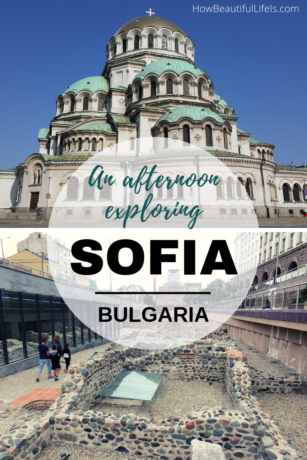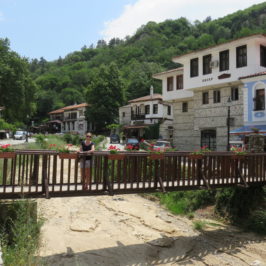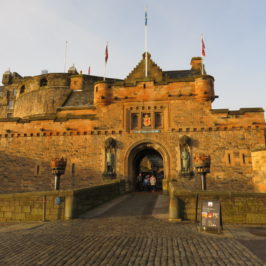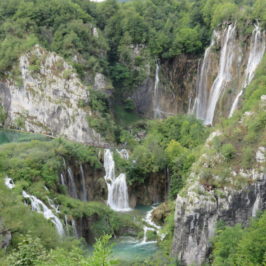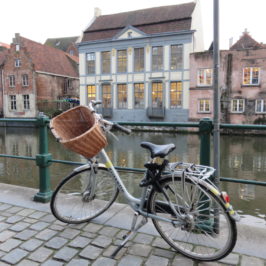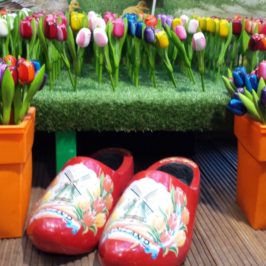This post may contain affiliate links. If you make a purchase through a link, I may receive a small commission, at no cost to you. These commissions help keep this website up and running, and I thank you for your support. Read my full disclosure here.
Disclaimer: This is not a sponsored post, I paid for this trip myself. All recommendations and opinions are my own.
We visited Sofia on our 11 day self-drive holiday around Bulgaria. We had been staying in Melnik, the smallest town in Bulgaria, where we enjoyed sampling the wine and hiking the beautiful countryside. Our next stop was the city of Sofia which is the capital of Bulgaria. This city has an interesting history after being occupied for over 2,000 years by Greeks, Romans, Ottomans and the Soviets.
The drive from Melnik to Sofia was an easy one as it is connected by a large multi-lane highway. However, once we got into the outskirts of Sofia, the roads became very busy with lots of potholes. Sofia is a large, bustling city so it can be a bit scary to drive around if you are not used to this kind of driving. Our accommodation at Generaator Sofia didn’t have it’s own parking, so we found a park in the side street so we could sort out parking. Our host showed where the parking garage was and then arranged for us to have an early check-in so we could head out to explore.
We had only scheduled to stay in Sofia for a night, but there is plenty to see and do that could easily keep you busy for a couple of days. Unfortunately, there was a very large storm that swept through Sofia in the afternoon of our visit which rather hindered our exploration. But here is what we managed to see and do in our short time.
Banya Bashi
bulevard “Knyaginya Maria Luiza” 18, 1000 Sofia Center, Sofia
The ornate Banya Bashi mosque was once part of a large bath complex in 16th-century Ottoman Empire with a dome built over the thermal spas. Sofia has been celebrated for generations due to its natural hot water springs that run through the city. Public baths have existed in Sofia since at least the 16th century. You can enter the mosque, but you must not take photos and you must have your shoulders and knees covered.
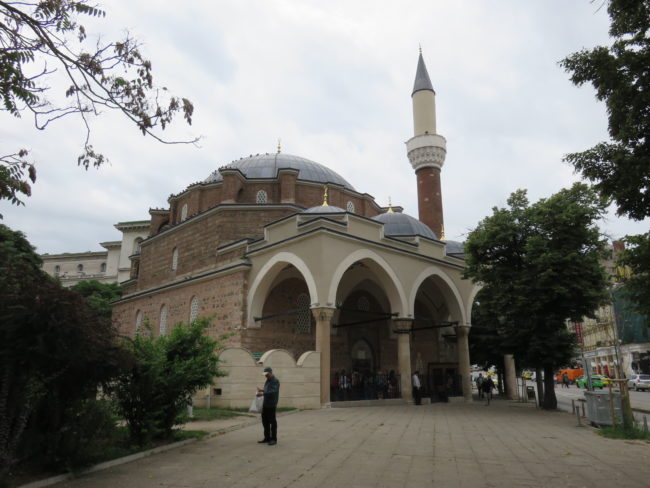
Regional History Museum
1 Banski Sq, 1000 Sofia Center, Sofia, Bulgaria. Small entry fee applies.
We didn’t get time to visit the Regional History Museum, but it is housed in a beautiful building that was the former bath house. It sits within a small peaceful green space with a large water fountain in front of it which wasn’t working when we were there. Around the side of the building is a drinking fountain where you can sample the famous water and beside it on display is the original water fountain. Not far from here we came across a building with a gamma level reading on display, which was a bit disconcerting. However, it was reading as ‘normal’!
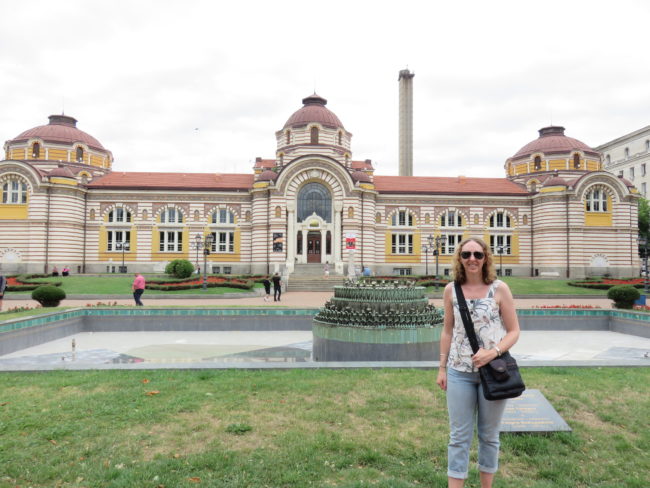
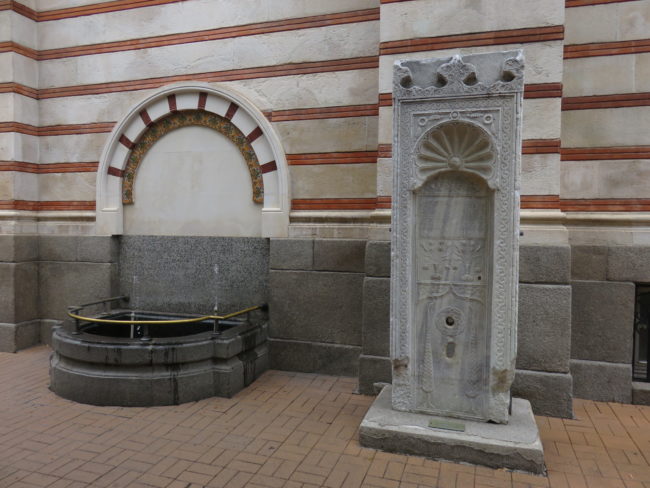
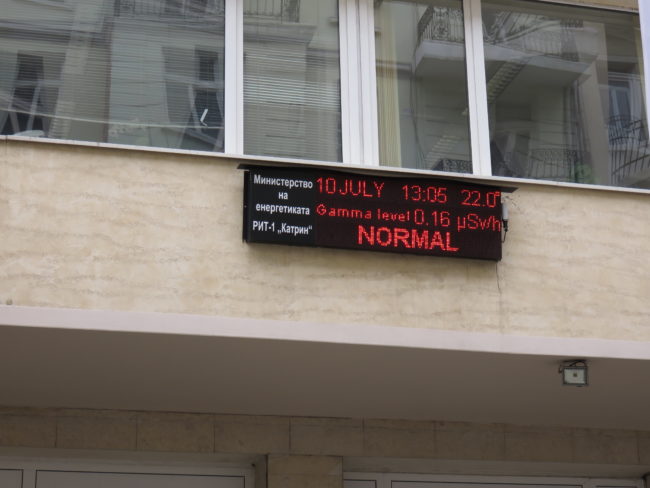
Fountain at Atanas Burov Square
Visitors come to see the water fountain display at Atanas Burov Square. We had planned to return here in the evening when the fountains also put on a light display, but unfortunately, the bad weather meant we missed it.
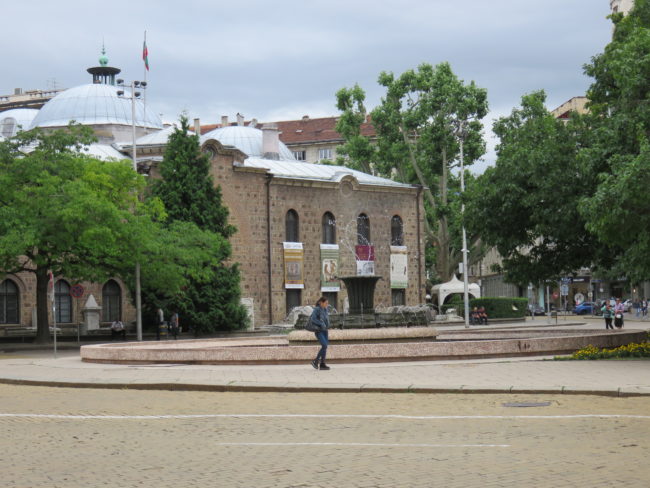
Largo
The Largo is three Socialist Classicism edifices in central Sofia. They were built in the 1950’s with the intention of becoming the city’s new Soviet centre. The buildings include the former Party House of the now defunct Bulgarian Communist Party. Following the end of the Soviet era, the symbols of communism in the decoration was removed. The yellow cobblestone square at the centre of these buildings is called Nezavisimost (Independence) Square.
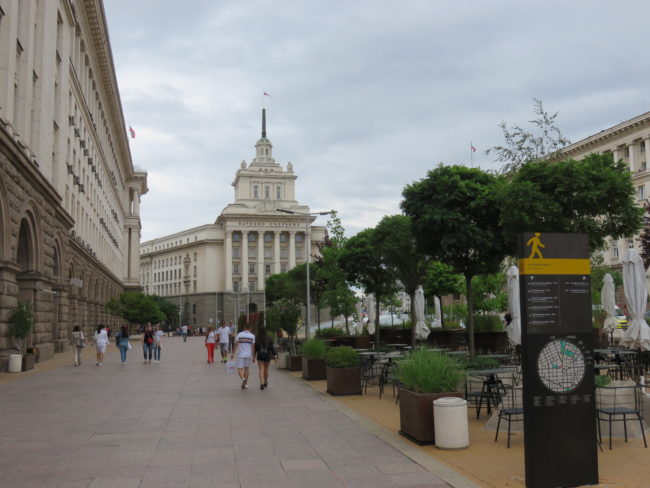
The Ancient City of Serdica
In front of the largo is a large glass floor which is actually the roof over an ancient Roman amphitheatre. These are part of extensive ruins of the ancient Thracian and Roman city of Serdica which have been excavated and are now on display for the public to enjoy. We headed down to Serdika metro station where there is a large map of all the sites to see. The Thracian tribe of Serdi settled in the region around 2000 BC but in the 1st century AD they were conquered by the Romans. The Romans grew the area into a large city and built public and government buildings, an amphitheatre, public baths and basilicas.
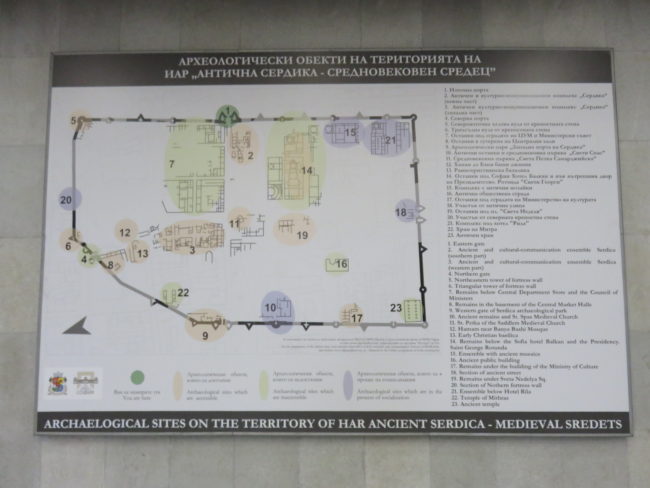
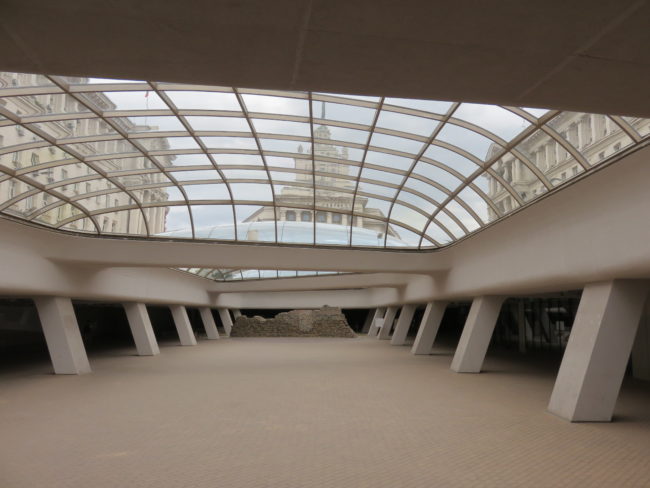
Historic Places of Worship
There are many beautiful historic churches, synagogues, and mosques in Bulgaria. Amongst the ruins of Serdica is the Church of St Petka, a medieval Bulgarian Orthodox church. It sits across from Sofia’s oldest building, the 4th century Christian Church St. George Rotunda. St George features a fresco dome and was converted to a mosque during the Ottoman rule in the 16th century, but then changed back to a church by the Bulgarian’s in the 19th century.

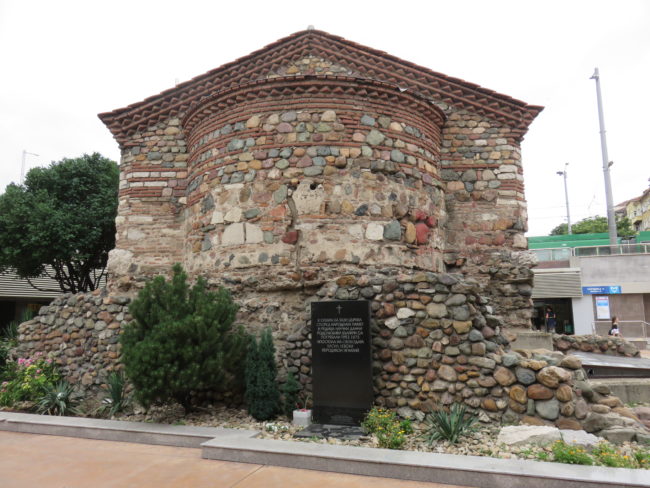
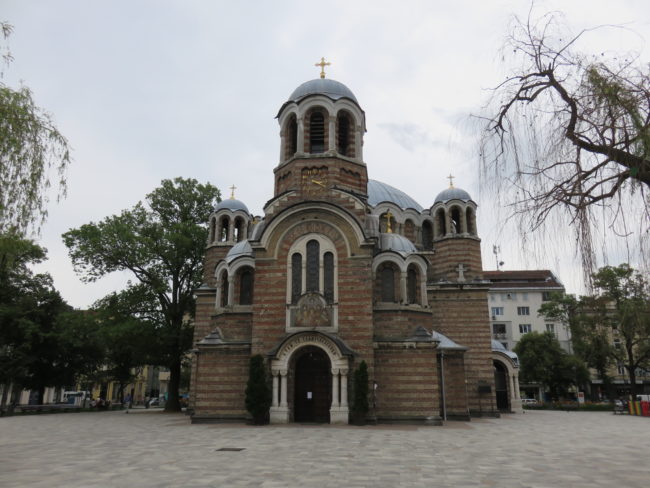
Saint Sofia Monument
Across from the Church of St Petka is the golden statue of Saint Sofia that sits high in the sky overlooking passersby. Apparently she replaced a statue of Lenin which once stood here. She is adorned with the symbols of power (crown), fame (wreath) and wisdom (owl).

City Garden and National Theatre “Ivan Vazov” and the National Art Gallery
The beautiful City Garden was a pleasant spot to rest our feet and enjoy the water fountains. Unfortunately our view of the beautiful National Theatre building was obstructed by a temporary stage that was set up in front of it, but it is a beautiful building. The art gallery is also in this park in a large grand building, but we didn’t get time to explore.
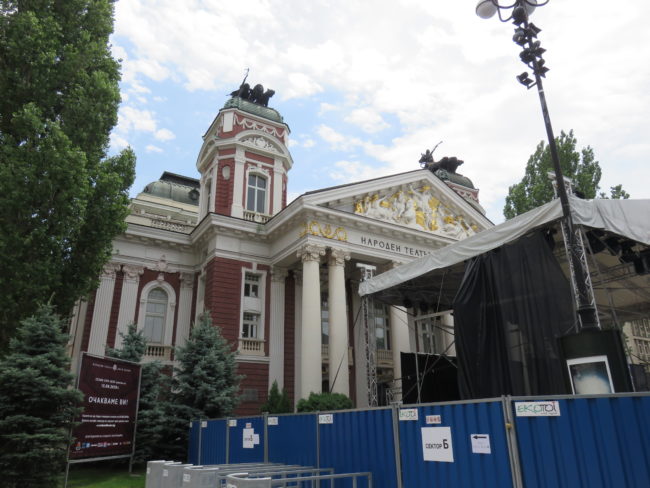
Free Sofia Balkan Bites Food Tour
We had booked ourselves on the free Balkan Bites Food Tour, so we met our tour group at the Crystal Garden by the Stefan Stambolov monument. The tour takes about 2 hours and bookings are recommended, although they do their best to accommodate everyone. The tour takes you to a range of modern and traditional restaurants to give you the opportunity to sample their food. Then afterwards you can go and enjoy a full meal at your favourite restaurant.

After meeting our fellow tourists, we headed out to our first stop at Supa Star (ul. “Tsar Ivan Shishman” 8, 1000 Sofia Center, Sofia), a trendy soup and sandwich bar where we were given some tarator soup. We had enjoyed this soup almost on a daily basis whilst we had been in Bulgaria. It is a cold soup made with watered down yoghurt (Bulgarians love with their yoghurt), grated cucumber, garlic, walnut, dill and a splash of sunflower oil. It is very easy to make and since returning home we’ve made it several times.
Our next stop was Sofiyska Banitsa which was in the underground. Here we sampled a traditional cheese pie called a banitsa. It’s made of thin filo pastry layers with a mixture of yoghurt, beaten eggs, white pickled cheese, oil and some salt. It was delicious and I was inspired to make it myself at home.

On our way to the next restaurant, our tour guide took us to see a squat shop – a strange little shop front that is simply a window at ground level. You have to squat down to talk to the person working in the shop, hence the name squat shop. These shops came about following the fall of communism when people struggled to make a living so started operating shops out of the basement of their building. Most have them are closed, but you can still find some around Bulgaria.
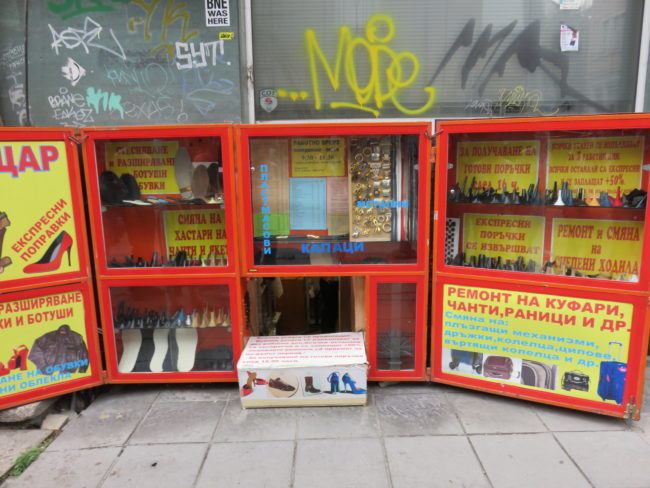
Our next stop was at the delicious burger restaurant Skaptoburger (ul. “Tsar Ivan Shishman” 20, 1000 Sofia Center, Sofia) which also serves craft beer. It’s been awarded best burger in Sofia. This restaurant was created by two students from the American University in Bulgaria who decided they needed a hangout spot. I loved the freshly ground beef patties that were served pink, just how I like them. Some of the group didn’t eat meat, so we ended up getting half a burger each which was delicious.
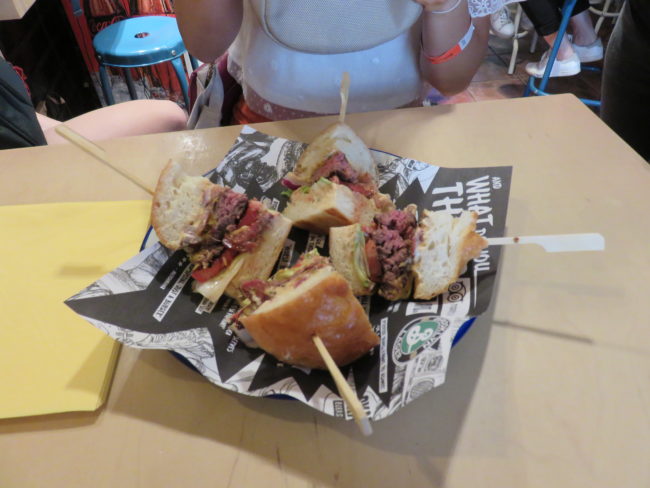
Next we stopped outside the vegetarian restaurant and bakery Sun Moon (ul. “6-ti septemvri” 39, 1000 Sofia Center, Sofia). Our host brought us out some little canapes with different tomato toppings.
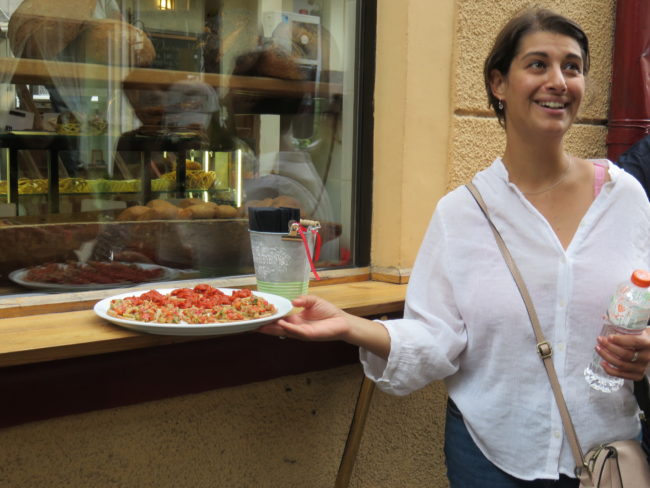
Our final stop, Hadjidraganovite izbi (ul. “Hristo Belchev” 18, 1000 Sofia Center, Sofia), was a traditional Bulgarian restaurant. It was decorated with traditional wood carvings and weaved fabric and outfits. Here we enjoyed some canapes with yoghurt and herb toppings accompanied with a small shot of traditional alcohol.
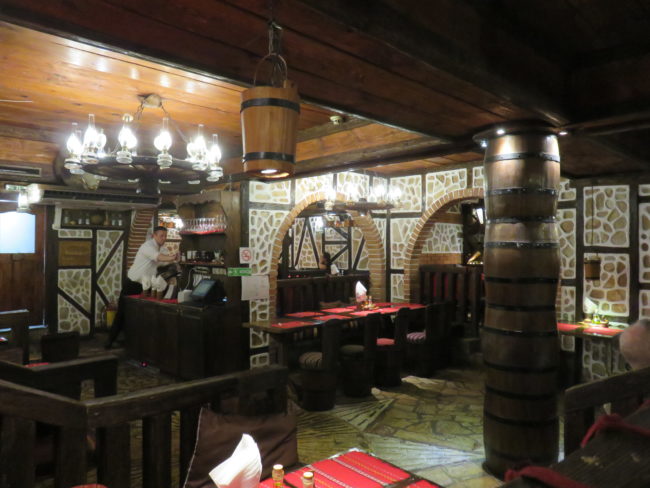
Unfortunately at this point a heavy storm had broken out which lasted most of the evening so it put a bit of a damper on our day in Sofia. I would love to return in the future to spend a bit more time here, as I felt that we didn’t quite get enough time to explore.
Accommodation Options in Sofia
Search available accommodation in Sofia
Budget
- Moreto & Caffeto Hostel – Dorms and private rooms available.
- Centralissimo
- Generaator Sofia – we stayed here
- Peter Pan House
Moderate
Luxury
- Grand Hotel Sofia
- Arena Di Serdica Hotel – Ruins of the ancient Roman amphitheatre are exposed at the ground floor of the hotel.
- InterContinental Sofia
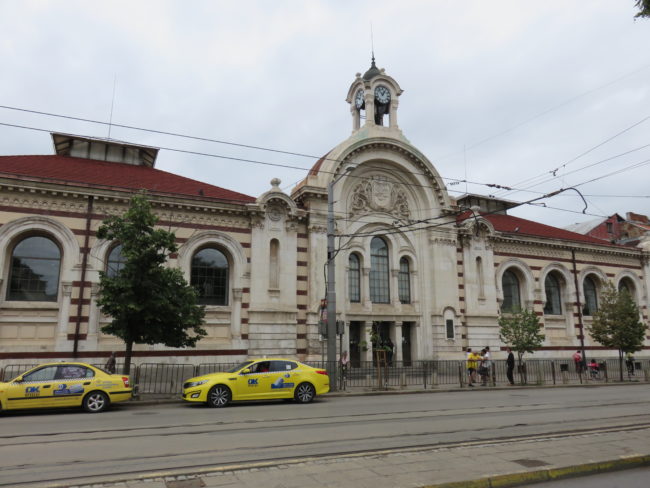
Practical Tips for Visiting Sofia
- How long should I visit Sofia for? Put aside at least a day. If you can accommodate it, then two days will allow you to really explore.
- Language: Bulgarian. It can be difficult to understand signs when they are in Bulgarian, as it looks nothing like the English version. Many of the areas we visited in Bulgaria only limited people spoke English, so we tried to make an effort with some Bulgarian. I encourage you to try a little Bulgarian too. Fun fact – Bulgarians nod when they say no and shake their head when they mean yes.
- Yes = да (da)
- No = не (ne)
- Please = моля (molya)
- Thank you = благодаря (blagodarya)
- Hello = добър ден (dobar den)
- Where is the toilet? къде в тоалетната (kade e toaletnata)
- Currency: Bulgarian Lev, or Leva, which is the plural. Most places had card machines and there were plenty of ATM’s. However, you will need small change for the buses.
- Electricity: The electrical current is 220-240 volts, 50-60 Hz. Wall outlets take the European two round prong plugs. However, you are better off purchasing a worldwide adaptor that can be used in Bulgaria as well other countries. At least then you can potentially get some further use out of it on future vacations. If you’re taking a number of electronics with you, then I would recommend purchasing a couple of these adaptors.
- Driving: In Bulgaria they drive on the right hand side of the road with speed signs in kilometres per hour (km). The speed limits are 50 km (31 mph) within towns; 90 km (56 mph) outside towns; 120 km (75 mph) on expressways; and a rather scary 140 km (87 mph) on motorways. Some of the roads we drove on were very old with huge pot holes and the paint had long since faded, so we had to drive slower in these areas.
- Navigating: We used Google’s free Offline Maps. Google Offline Maps allows you to access free maps for navigating that can be used offline i.e. you don’t need WIFI, data, or roaming to be able to use them. Follow this detailed guide on how to use Googles Offline Maps. Using your phone as a GPS will drain your battery quickly, so use a portable battery charger which you can use to charge your phone and any other USB chargeable devices. If you prefer a paper map, then purchase a Bulgarian road map before you go. At least it’s reliable and won’t run out of battery or malfunction like the electronic options!

